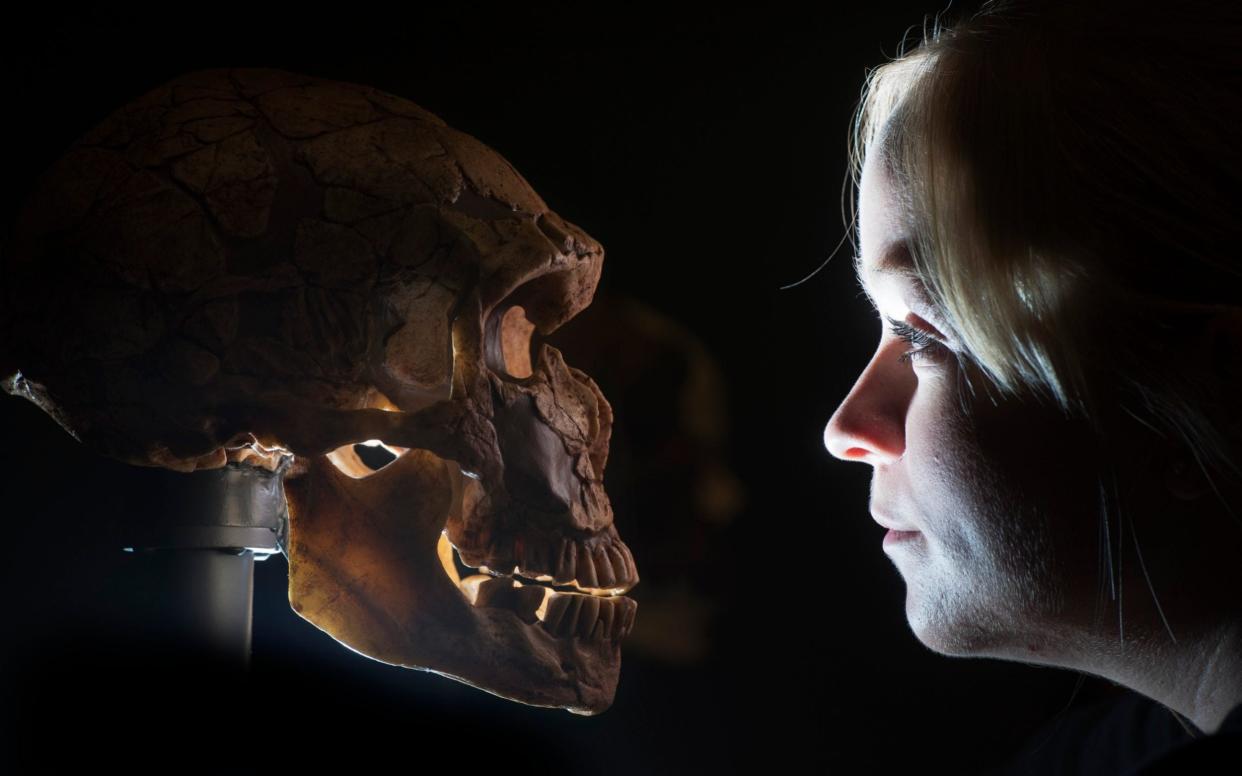Museums urged to display the harsh realities of Neanderthal lives

Museums should rearrange their Neanderthal displays to include the sick, old and infirm rather than strapping healthy hunters, an archaeologist has claimed.
Dioramas of prehistoric communities traditionally show young and fit men clutching flint tools, spears or clubs, in a bucolic impression of an idealised past.
But according to Dr Penny Spikins, an archaeology lecturer from The University of York, hunter-gatherers were only healthy for around 10 per cent of their lives, because the extreme rigours of their demanding existence often left them injured or starving.
She argues that Neanderthals and early humans spent large parts of their lives tending to sick relatives, and that should be represented in displays, as it was that ‘interdependency’ that makes us unique, and evolutionarily successful.
The ability to care for the sick also allowed foraging communities to begin hunting large animals, as they could be sure they would be looked after when they were injured.

Speaking at the British Science Festival in Coventry, Dr Spikins, said: “If you got a group of Neanderthals would it look like they had been in the wars and that’s not what we see in reconstructions.
“They would be at least 50 per cent children, and they’re not in there, and some elderly. In a way there is an issue with disability, we’re not comfortable with disability and yet our past is one in which a lot of people have what we would now see as a disability, ad yet we’re not comfortable with that.
“We assume that everyone was highly competitive, very individualistic, invulnerable. Inn our reconstructions of the distant past we’ve got lots of guys about the same age, all perfectly stood up, and then a few women sat down, never allowed to hold anything dangerous.
“What’s most interesting if we look at modern hunting and gathering populations they say that perhaps only 10 per cent of the time they ever feel well and healthy.”
Archaeologists have found around 50 skeletons of Neanderthals, and 17 of them shows signs that they had illnesses or injuries that would have required constant care and support.
Although the species eventually died out around 30,000 years ago, they interbred with homo sapiens, and most people carry between one and two per cent of Neanderthal DNA.

One Neanderthal specimen, from La Chapelle-aux-Saints, in France, was found suffering from systemic illness, inflammation and severe arthritis but was looked after for at least six months by his community, before his death.
Another known as ‘Shanidar Man’ who was discovered in a cave in Iraq, had one withered arm, one withered leg, was blind in one eye and was probably deaf. He had been like that for 10 to 15 years and must have been looked after by the others.
“It’s difficult to see what he could have contributed to the group,’ added Dr Spikins.
“These were very mobile societies, and survival was difficult there is evidence from teeth of periods of famine, but nonetheless they are supporting those people.
“Evidence of care for the ill and injured in the evolutionary past is a sidelined area of archaeological evidence that people have assumed is not important for the history of what made us human.
“Actually the story of human origins is one of interdependence and that’s why evidence for caring for the ill and injured is important because what worked in human evolution was interdependence.
“We’re not very good at being vulnerable, and we have this image of ourselves as competitive and individualistic is often an unhelpful and unhealthy, then we apply that back on to the past and then that justifies the present again and that’s slightly worrying.
“Actually throughout our evolutionary history we’ve been interdependent and everyone has periods of vulnerability, maybe that might help you find it easier to handle being vulnerable, something just part of being human not a fault.”
Archaeological evidence has also shown that Neanderthals had a reasonably advanced healthcare system. Dental calculus from a site called El Sidron was found to have poplar bark, which contains aspirin.
There is also little evidence of major infections, which would show up in bones, suggesting they were using some kind of antibiotics, said Dr Spikins.
And there is evidence of healthcare from even earlier in our ancestral lineage.
From 1.6 million years ago, a fossil was found of a Homo erectus, suffering from hypervitamintosis, who must have needed help for months before death.


